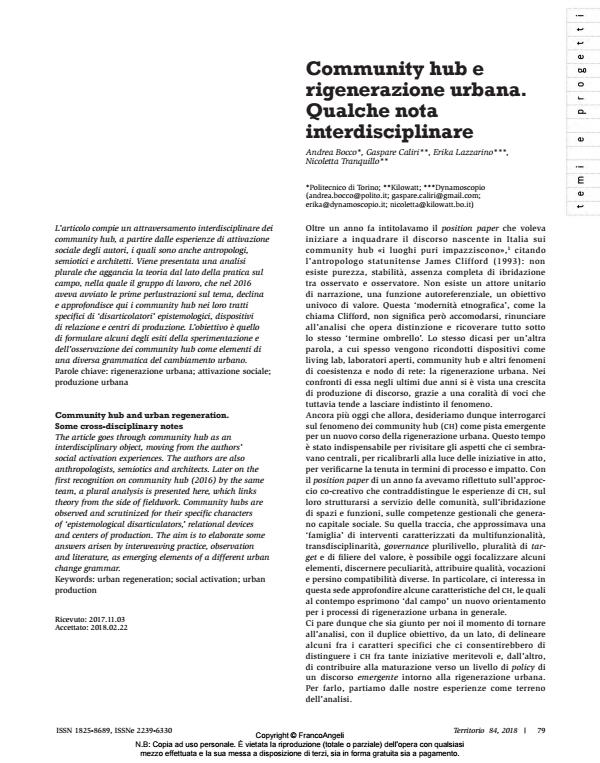Community hub and urban regeneration. Some cross-disciplinary notes
Journal title TERRITORIO
Author/s Andrea Bocco, Gaspare Caliri, Erika Lazzarino, Nicoletta Tranquillo
Publishing Year 2018 Issue 2018/84
Language Italian Pages 8 P. 79-86 File size 341 KB
DOI 10.3280/TR2018-084012
DOI is like a bar code for intellectual property: to have more infomation
click here
Below, you can see the article first page
If you want to buy this article in PDF format, you can do it, following the instructions to buy download credits

FrancoAngeli is member of Publishers International Linking Association, Inc (PILA), a not-for-profit association which run the CrossRef service enabling links to and from online scholarly content.
The article goes through community hub as an interdisciplinary object, moving from the authors’ social activation experiences. The authors are also anthropologists, semiotics and architects. Later on the first recognition on community hub (2016) by the same team, a plural analysis is presented here, which links theory from the side of fieldwork. Community hubs are observed and scrutinized for their specific characters of ‘epistemological disarticulators,’ relational devices and centers of production. The aim is to elaborate some answers arisen by interweaving practice, observation and literature, as emerging elements of a different urban change grammar.
Keywords: Urban regeneration; social activation; urban production
- The Valuation of Idle Real Estate in Rural Areas: Analysis and Territorial Strategies Anna Richiedei, in Sustainability /2020 pp.8240
DOI: 10.3390/su12198240
Andrea Bocco, Gaspare Caliri, Erika Lazzarino, Nicoletta Tranquillo, Community hub e rigenerazione urbana. Qualche nota interdisciplinare in "TERRITORIO" 84/2018, pp 79-86, DOI: 10.3280/TR2018-084012